Perlis |
|
|
|
| Übersicht – Contents: | |
Perlis |
|
|
|
| Übersicht – Contents: | |
Flaggen – Flags: |
|
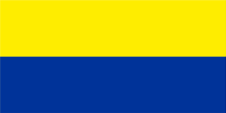 |
Flagge von Perlis – flag of Perlis, Seitenverhältnis – ratio = 1:2, Quelle/Source, nach/by: Die Welt im bunten Flaggenbild   |
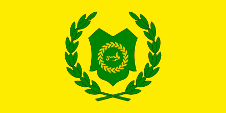 |
Standarte des Radscha – standard of the Raja, Seitenverhältnis – ratio = 1:2, Quelle/Source, nach/by: Die Welt im bunten Flaggenbild |
|
|
|
historische Flaggen – historical Flags: |
|
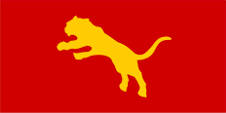 |
1821–1842, Flagge von Kedah – flag of Kedah, Quelle/Source, nach/by: Die Welt im bunten Flaggenbild, Wikipedia (EN) |
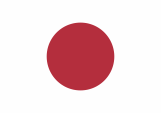 |
1941–1945, Perlis ist von Japan besetzt – Perlis is occupied by Japan, Seitenverhältnis – ratio = 7:10, Quelle/Source, nach/by: Wikipedia (EN)  |
|
|
|
Bedeutung/Ursprung der Flagge – Meaning/Origin of the Flag: |
|
| Die Flagge von Perlis stammt aus dem Jahre 1870. Die Flagge zeigt zwei horizontale Streifen in Gelb und Blau. Das Gelb repräsentiert den Monarchen, Blau das Volk. Die Flagge des Radschas von Perlis ist Gelb mit einem grünen Schild in der Mitte. Die arabischen Jawi-Schriftzeichen auf dem Schild lauten: "Perlis". Gelbe Flaggen verwenden sonst nur die Sultane der Malaiischen Staaten Kedah und Selangor, denn eigentlich repräsentiert in den Malaiischen Staaten die Farbe Weiß den Sultan. |
The flag of Perlis was created in 1870. The flag shows
two horizontal stripes in yellow and blue. Yellow represents the monarch, blue the people.
The flag of the Raja of Perlis is yellow with a green shield in the middle.
The Arabic Jawi characters in the middle of the shield mean: "Perlis". Yellow flags use otherwise only the Sultans of the Malay States Kedah and Selangor, but really represents the color white the Sultan in the Malay states. |
| Quelle/Source: Die Welt im bunten Flaggenbild, Flaggen Enzyklopädie | |
Wappen – Coat of Arms: |
|
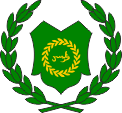 |
Wappen von Perlis – coat of arms of Perlis, Quelle/Source, nach/by: perlis.gov.my |
Bedeutung/Ursprung des Wappens – Meaning/Origin of the Coat of Arms: |
|
| Wappen von Perlis zeigt einen grün umkränzten grünen Schild, darauf, golden umkränzt, der Landesname in arabischen Jawi-Buchstaben in Gold. | The coat of arms of Perlis shows a green wreathed green shield, and on it, golden wreathed, the name of the country in Arabic Jawi letters in gold. |
| Quelle/Source: Wikipedia (EN), Volker Preuß | |
Landkarte – Map: |
|
|
| Die Bundesstaaten Malaysias – the Federal States of Malaysia: |
| interaktive Landkarte – interactive Map |
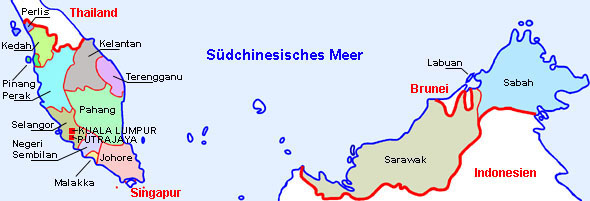 Landkarte/Map: Volker Preuß nach/to Malaysia? → hier klicken – click here |
Landkarte – Map: |
Lage auf der Malaiischen Halbinsel – Position on the Malay Peninsula: |
|
|
| Zahlen und Fakten – Numbers and Facts: | |
|
|
|
|
|
|
|
|
|
|
|
|
|
|
|
|
|
|
Geschichte: |
|
7.–11. Jhd. · zum Reich Shrividjaja 11. Jhd. · erste Erwähnung eines Staates Kadaram (Kedah) in der Region, zu dem das heutige Perlis gehört 12. Jhd. · Islamisierung 14.–15. Jhd. · zum Reich Siam 15. Jhd. · Eroberung durch Malakka 17. Jhd. · Angriffe durch Portugiesen, Kedah kommt vorübergehend unter Kontrolle des Sultanats Aceh 1786 · der Sultan von Kedah übergibt die Insel Pinang den Briten, als Schutzgarantie gegen Siam 1821 · Truppen aus Siam besetzen Kedah und gliedern es als "Syburi" ihrem Reich an 1842 · Siam trennt Perlis als Fürstentum von Kedah ab, ab 1843 von einem Radscha aus dem Hause Kedah regiert 1896 · Kedah und Perlis werden zur siamesischen Provinz "Monthon Syburi" vereinigt 1909 · Anglo-Siamesischer Vertrag, die heutige Grenze zwischen Malaysia und Thailand entsteht, denn Siam tritt Kedah, Kelantan, Perlis und Terengganu an Großbritannien ab und fasst diese Länder 1914 mit Johor zu den "Nichtföderierte Malaienstaaten" zusammen 1941-1943 · von japanischen Truppen besetzt 1943–1945 · Anschluss an Thailand 01.04.1946 · Bildung der Malaiischen Union durch Zusammenschluss der Malaiischen Sultanate (Britische Protektorate) und der Straits Settlements (Britische Kronkolonien), jedoch ohne Singapur 1948 · Reorganisation der Malaiischen Union, Bildung der Malaiischen Föderation unter einem britischen Hochkommissar 31.08.1957 · Unabhängigkeit und Proklamation des Königreiches Malaiische Föderation 16.09.1963 · Proklamation des Königreiches Malaysia |
History: |
|
7th–11th cent. · to the Shrividjaja Empire 11th cent. · first mention of a state of Kadaram (Kedah) in the region, to which today's Perlis belongs 12th cent. · Islamisation 14th-15th cent. · to the empire of Siam 15th cent. · Conquest by Malacca 17th cent. · Portuguese attacks, Kedah temporarily comes under the control of the Sultanate of Aceh 1786 · the Sultan of Kedah hands over the island of Penang to the British, as a guarantee of protection against Siam 1821 · Siamese troops occupy Kedah and annex it to their empire as "Syburi" 1842 · Siam separates Perlis from Kedah as a principality, from 1843 ruled by a Rajah from the House of Kedah 1896 · Kedah and Perlis are united to form the Siamese province of "Monthon Syburi" 1909 · Anglo-Siamese Treaty, the present-day border between Malaysia and Thailand is created, as Siam cedes Kedah, Kelantan, Perlis and Terengganu to United Kingdom and combines these countries in 1914 with Johor to form the "Non-Federated Malay States" 1941-1943 · occupied by Japanese Troops 1943–1945 · annexed to Thailand 1st of April 1946 · creation of the Malaysian Union by confederation of the Malaysian Sultanates (British protectorates) and the Straits Settlements (British crown colonies), however without Singapore 1948 · re-organization of the Malaysian Union, creation of the Malaysian Federation under a British High Commissioner 31st of August 1957 · independence and proclamation of the Kingdom of Malaysian Federation 16th of September 1963 · proclamation of the Kingdom of Malaysia |
| Quelle/Source: Atlas zur Geschichte, Wikipedia (EN), Discovery '97 |
Ursprung des Landesnamens – Origin of the Country's Name: |
|
| Der Ursprung des Landesnamens "Perlis" ist unklar. Es gibt nur Vermutungen. So soll der Name von dem Satz "Phrao Loi" herkommen was "Kokosnuss an Land gespült" bedeutet, oder der Name kommt vom malaiischen Wort "peroleh", was "erhalten" bedeutet, was an die Abtretung von Perlis von Kedah anspielen soll. Es gibt auch die Theorie, das der Name auf eine inzwischen ausgestorbene Baumart zurückgeht, die hier wuchs. Auch soll der Name von dem Wort "perelus" herkommen was "Fuß fällt in einen Riss" bedeutet, wegen des hier vorkommenden Schlammes. |
The origin of the country name "Perlis" is unclear. There is only
conjecture. The name is said to come from the phrase "Phrao Loi", which
means "coconut washed ashore", or the name comes from the Malay word
"peroleh", which means "preserved", alluding to the cession of Perlis from
Kedah. There is also a theory that the name comes from a now extinct species of tree that grew here. The name is also said to come from the word "perelus" which means "foot falls into a crack" because of the mud found here. |
| Quelle/Source: Wikipedia (EN) | |